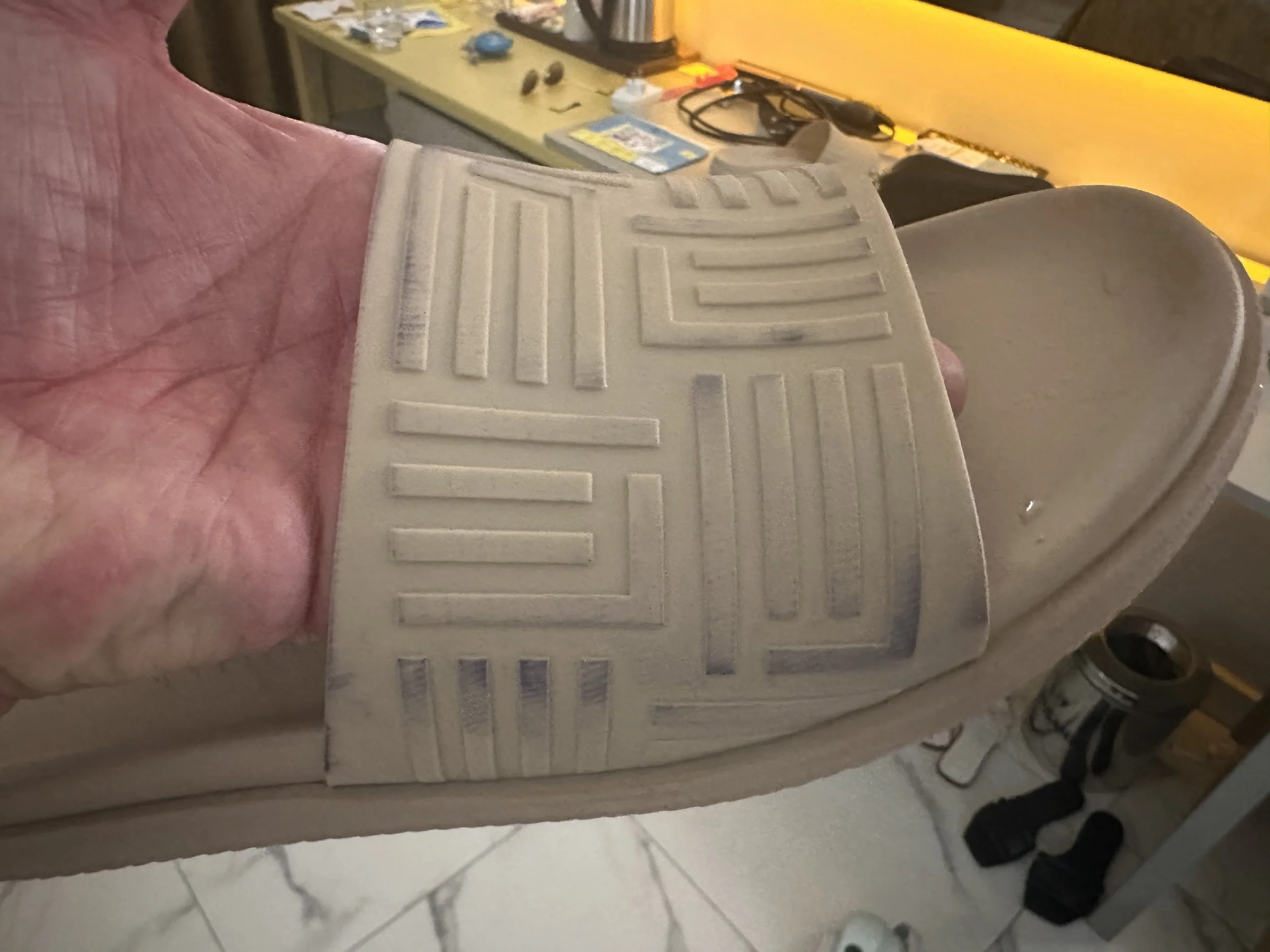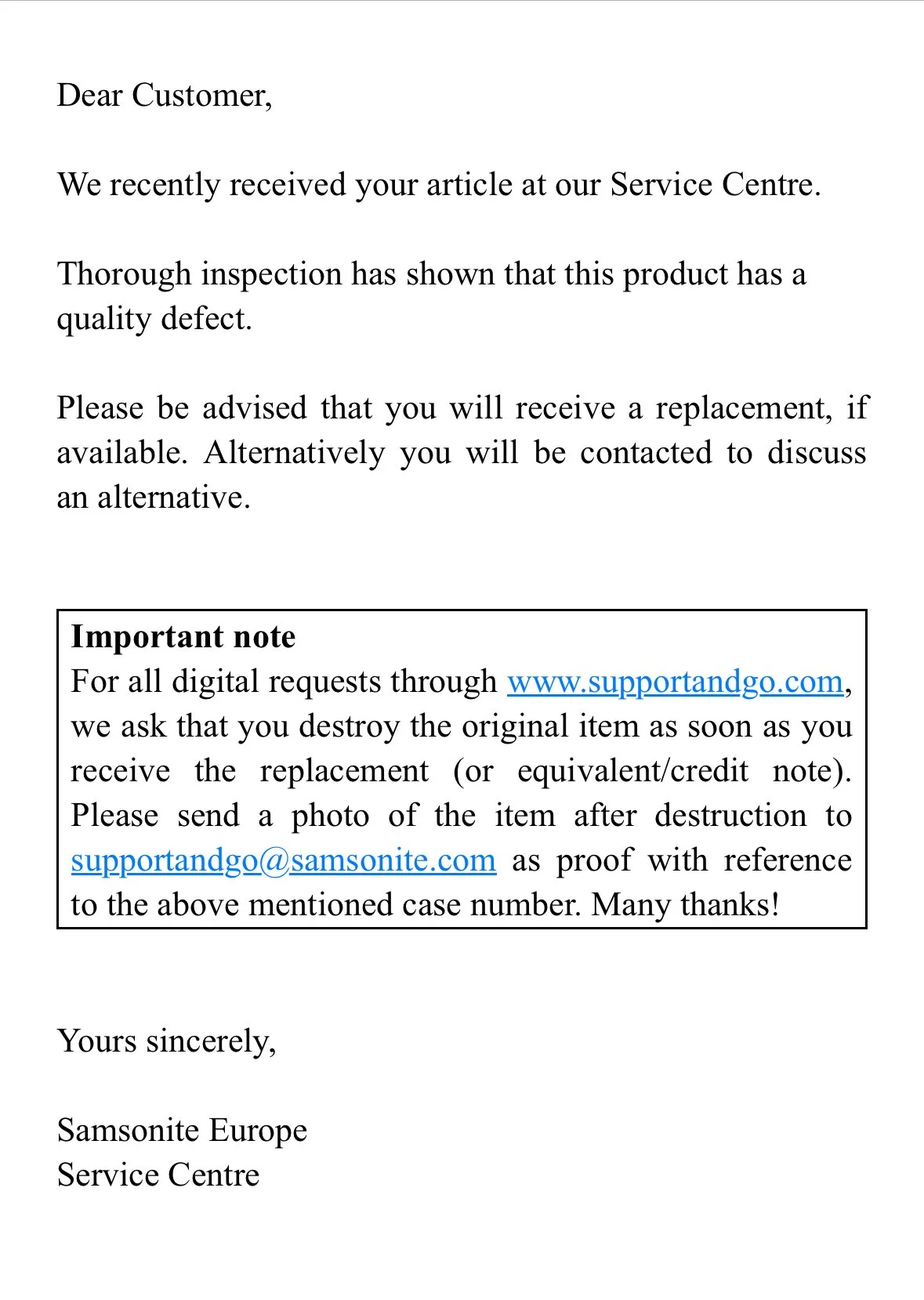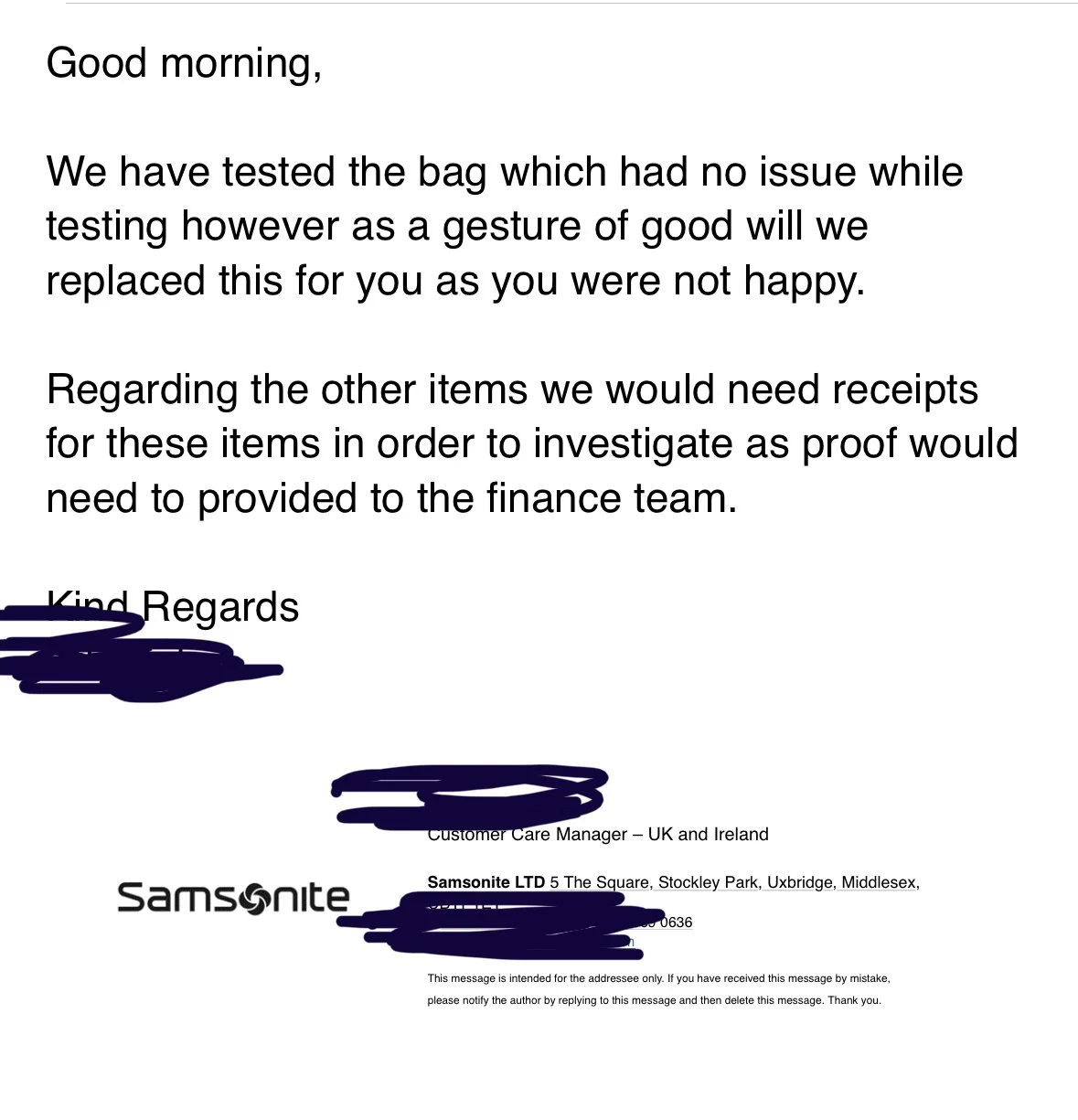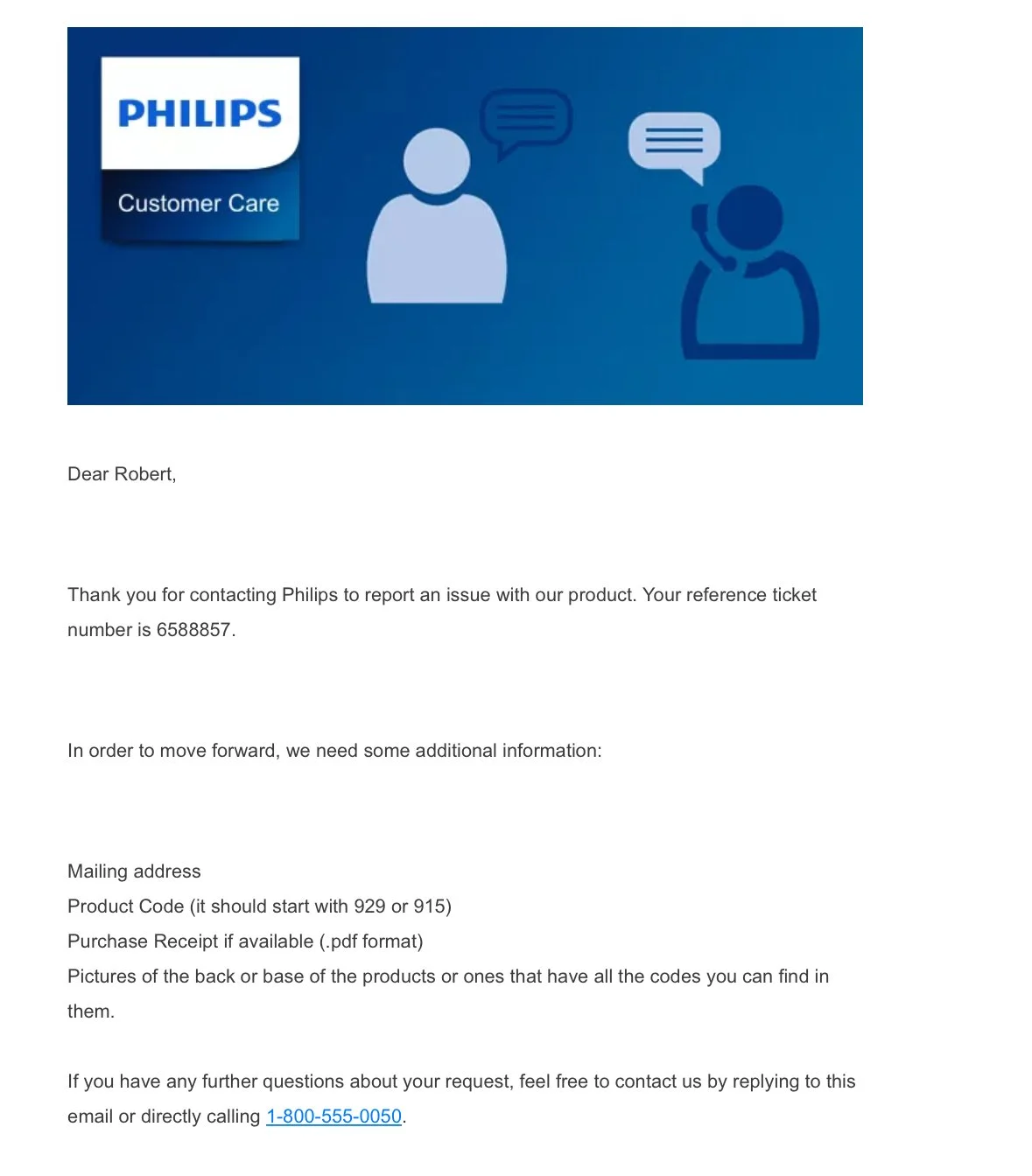Two faulty items, two different experiences
Two recent service experiences have provided brilliant examples of how to handle (and how not to handle) complaints about faulty products - highlighting the cost of disproportionate controls and the benefits of a focus on First Contact Resolution (FCR) and delivering an Effective outcome.
Bad example - Samsonite backpack
Back in February I realised my new Samsonite backpack was leaving a blue stain on my clothing.
I raised a case online with Samsonite and was told I would get a response within 5 days. I never heard anything further from them.
A few months later, in August, when I was catching up with some personal admin, I contacted them again to remind them I had never heard back from them. A few more days passed and still no reply. At this point I reached out on LinkedIn to Samsonite’s UK Managing Director asking him to investigate, and hey presto, I received an email from the Head of AfterCare offering to inspect my bag (which was under warranty) as “for us to proceed with a warranty claim, the bag will need to be tested with the faults you advised.”
I was provided with a link that took me to a third-party website (Fixmybag.com) and was instructed to arrange for collection of the bag through them. I was required to also submit proof of purchase or stamped warranty card. I duly sent the bag off with the required information to the third party repairer. Twenty-five days passed and I’d heard nothing, so I emailed them asking what was happening. I then received an email in reply stating they’d had to refer the case to Samsonite as they couldn’t repair the fault. Another ten days passed and I received an email from Samsonite advising me that the product has a quality defect.
The impersonal nature of the email (“Dear customer”) and the rather formal language (“Please be advised….”) felt slightly odd and I was confused as to what would happen next. What if a replacement isn’t available? If it is, when will I get it? And maybe an apology wouldn’t have gone amiss! The response was wholly missing any empathy or personal tailoring. But at least they’d agreed there was a manufacturing fault.
A few days later, a mystery package arrived at home - it was a new backpack! Hooray!
I contacted the Head of Aftercare to give him the good news that my replacement bag had arrived, and to gently raise the subject of the 2 shirts and pair of sliders that had been ruined by the staining. A few days later comes the reply:
Hang on a minute! They’d previously emailed me to confirm there was a manufacturing defect but now they’re saying there wasn’t? I emailed back to ask the obvious question, whilst also attaching the receipts for the damaged items.
So they were now denying there was a problem with the bag. However, two days later I received another email, offering me payment via cheque for the amount I had claimed for the damaged clothing (£85) or a Samsonite voucher for £100. I replied that I would prefer a cheque. That was three weeks ago. You won’t be surprised to hear no cheque has yet been received, despite my chasing it up.
The retail cost of this backpack was around £150. The cost to Samsonite of providing me with a replacement probably around £50 to them. The amount it has cost them to handle this - including the postage and inspection by a third party - must be several hundreds of pounds (and it’s still not finished.) From an economic point of view, this makes absolutely no sense.
Good example - Philips Smart Lightbulbs
A completely different experience with Philips, when three smart lightbulbs I’d bought from them failed to connect to the wi-fi. I was able to call Philips and speak to a real human who ran through some quick diagnostics with me, then told me he was going to send me an email immediately with the information he would need to deal with the claim. He said he would wait on the line until I had received the email, and help me to pull together what was needed.
I gathered the required information together and - with the Philips agent still on the phone - emailed it back to him. He immediately looked at what I had sent, confirmed he had everything he needed, and advised me he was sending me a replacement pack of bulbs straight away!
Compared to the Samsonite experience, this was incredible. Although the call took around twenty minutes - much of which involved the Philips Agent waiting for me do do things - the call was resolved in one go. This is an Effective Service approach.
Many companies - in Efficient Service mode - would have been trying to get me off the phone (AHT targets!). I’d have sent an email, generating work into a back office team. They’d have demanded I return the faulty bulbs to be inspected for a fault. There’d have been a delay, during which time I’d have placed failure demand on their contact centre.
The cost of the bulbs was around £150 - same as the Samsung backpack. The cost to Philips to handle my request was the cost of one 20 minute phone call. One problem solved in a single call. The other still ongoing after 8 months!
Conclusion
First Contact Resolution costs far less than lengthy processes that involve multiple teams. It’s possible to have controls (proof of purchase etc) without creating unnecessary delays. Samsonite have provided a dreadful service to someone who was previously a loyal customer. Philips have shown me why I will continue to be a loyal customer of theirs - buying products, confident that they will quickly resolve any problems should they occur.
A great example of how Effective Service costs less, delivers better outcomes for customers, and drives greater customer lifetime value! In the meantime, maybe my cheque from Samsonite is “in the post!”






